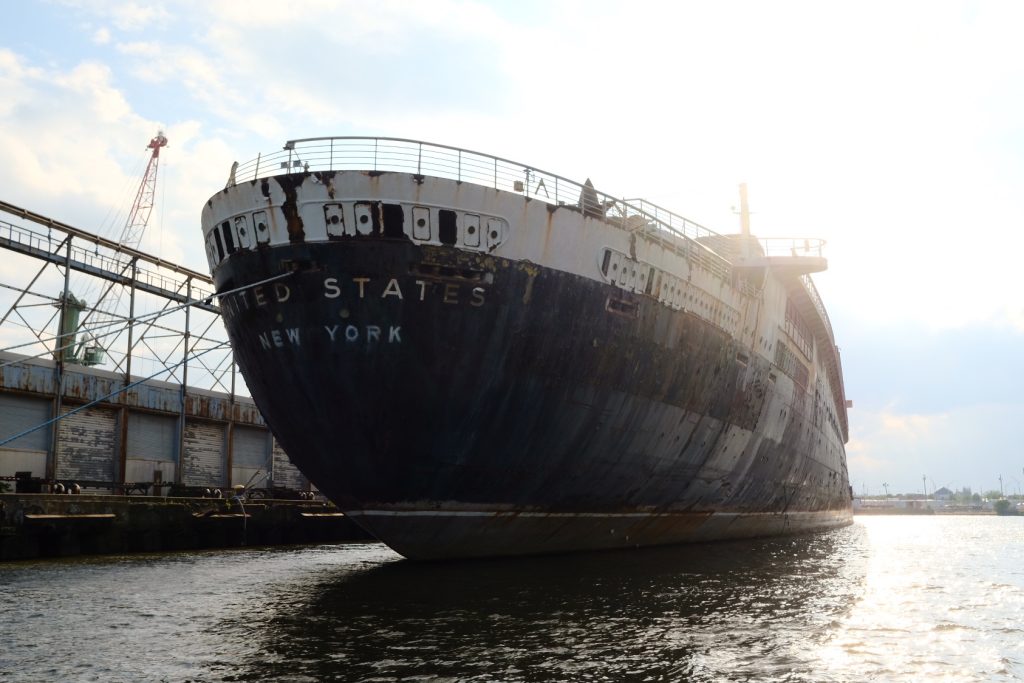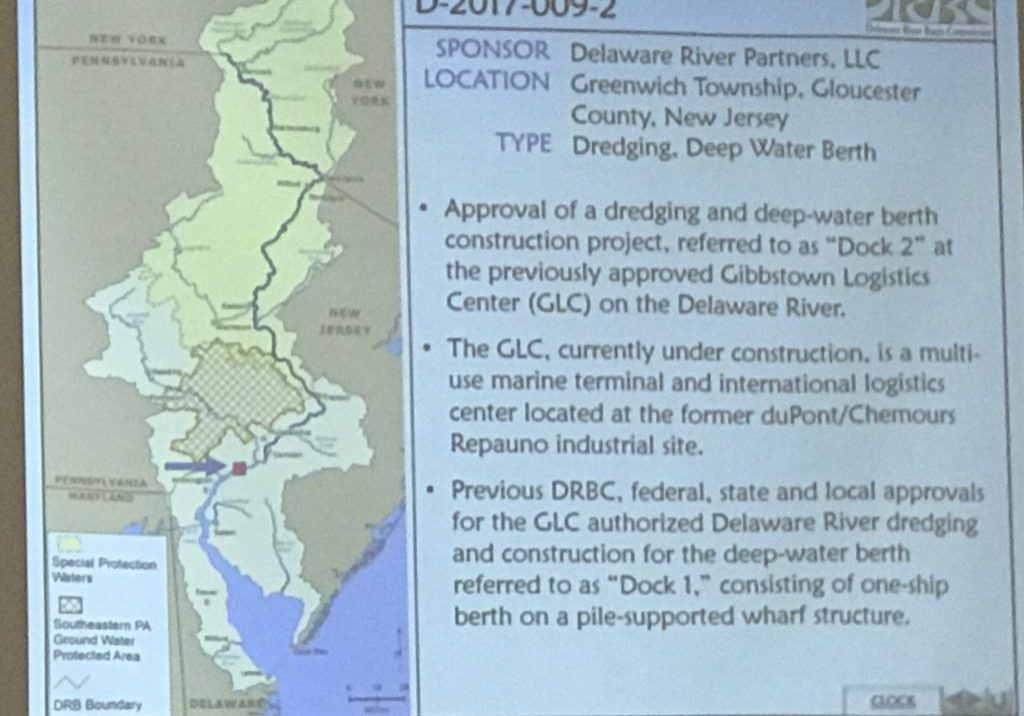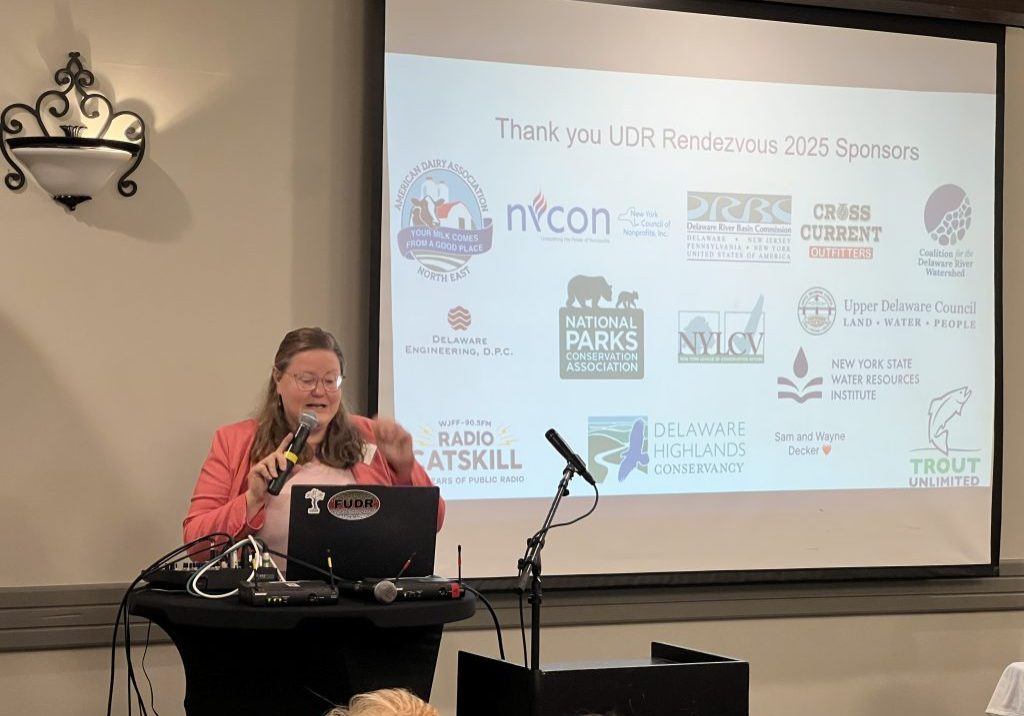
SS United States has no departure date on the horizon: Here’s what we know
| December 11, 2024
It’s anything but smooth sailing for the SS United States, the celebrated former ocean liner that is set to be sunk off the coast of Florida and become the world’s largest artificial reef, as it continues to face delays in leaving its Philadelphia port.
Here’s what we know:
What’s taking so long?
Okaloosa County, Fla., has bought the SS United States for $1 million to ultimately sink it as an artificial reef to make it a scuba diving and fishing destination that would draw tourists and benefit the local economy.
The issue is getting the necessary permits from federal regulators, such as the U.S. Coast Guard, to move it from its longtime home at Pier 82 in Philadelphia.
Nick Tomecek, a spokesman for Okaloosa County, said the county did not have a projected date for the move. He said the county “continues to work toward full compliance with Coast Guard requests to ensure a safe move of the vessel.”
A tow plan was submitted to the Coast Guard for its approval, according to county records. The Coast Guard did not respond to requests for comment.
A planned move of the SS United States set for last month was scratched. Organizers at the time partly blamed a tropical disturbance in the Gulf of Mexico that could interfere with the ship’s relocation to its first stop in Mobile, Ala., where it will be prepped for sinking.
Read more: Coast Guard says SS United States may be too unstable to move
Why sink it? Why not try to save it?
The SS United States was launched in 1951 and still holds the Blue Riband — the transatlantic speed record, which was achieved on her maiden voyage using only two-thirds of her power. She transported presidents, stars of stage and screen, heads of state, tourists, members of the armed forces, and immigrants until the advent of the jet age forced her retirement in 1969.
The conservancy for years floated various proposals to restore or preserve the historic ship but they never bore fruit. Then the conservancy became embroiled in a lawsuit this year in federal court with its landlord over overdue rent. That, in turn, put in motion eviction proceedings and a mad scramble to try to find a new home for the ship. Ultimately, the idea of sinking it as an artificial reef became the only viable option.
What good is an artificial reef?
The SS United States would become a marquee attraction for divers.
At nearly 1,000 feet long, “the SS United States will be the largest vessel ever prepared and deployed as an artificial reef, a record not soon to be broken, a prize for the people of the communities” where it will be deployed, according to a statement from Okaloosa County’s contractor, Coleen Marine.
“Deploying as an artificial reef provides the opportunity for a ship to live a second productive life while creating economic opportunities for the surrounding communities,” the statement added.
The idea is not without precedent.
A decommissioned Essex Class attack aircraft carrier, the USS Oriskany, was sunk off the coast of Pensacola, Fla., in 2006. A 2021 University of Florida study found “significant economic activities and impacts were realized during the year immediately following the deployment of the Oriskany.” That ship draws 10,000 divers a year, generating $3.6 million a year in direct spending on lodging, food and other services, according to county records
Similarly, a U.S. Navy submarine rescue ship, the 251-foot-long USS Kittiwake, was deployed as an artificial reef off the coast of the Cayman Islands in 2011. The new reef was expected to draw 10,000 new dive visits per year. Instead, it drew 20,000 visitors in the first 10 months.
Coleen Marine said it has extensive experience in this line of work, having prepared and deployed more than 130 vessels as artificial reefs, including the former Coast Guard vessel Tamaroa, which was immortalized in the book and movie “The Perfect Storm” for its rescue role and that was sunk off Delaware in 2017.
What environmental concerns are there?
The SS United States dates back to a time when hazardous materials, such as asbestos, polychlorinated biphenyls and paint containing lead, were commonly used.
As of Oct. 1, Coleen Marine had performed lab tests on 129 PCB samples and conducted a thorough inspection of the vessel to prepare it for departure from Philadelphia, according to county records. Upon its arrival in Mobile, contractors will remove the hazardous materials to ensure its deployment is clean and does not harm the environment, the county has said.
The highest priority will be the removal of IFO 180 fuel oil — described in county records as “black molasses-like blended fuel oil and water” — from the ship’s more than 120 tanks, each of which has varying amounts. Plans called for the fuel to be removed while temperatures were higher to reduce viscosity and improve the flow for smoother pumping.
Are there concerns that the ship could strike the Walt Whitman Bridge?
Tomecek downplayed news accounts that the ship’s stacks could come dangerously close to the underside of the Walt Whitman Bridge during its voyage.
“There are no new concerns related to the move of the SS United States,” he said. “We plan to move the ship at low tide to avoid bridge contact. That has always been the plan. The ship was safely moved into Philadelphia in 1996 and it will be safely moved as it departs the city.”
And Mike Williams, a spokesman for the Delaware River Port Authority, which operates the bridge, said: “We are following the guidance of the United States Coast Guard regarding all requirements and potential concerns related to the ship’s movement. At this time, we have not been informed of any changes to the previously established clearances or received notice of differences that could affect our bridges.”







